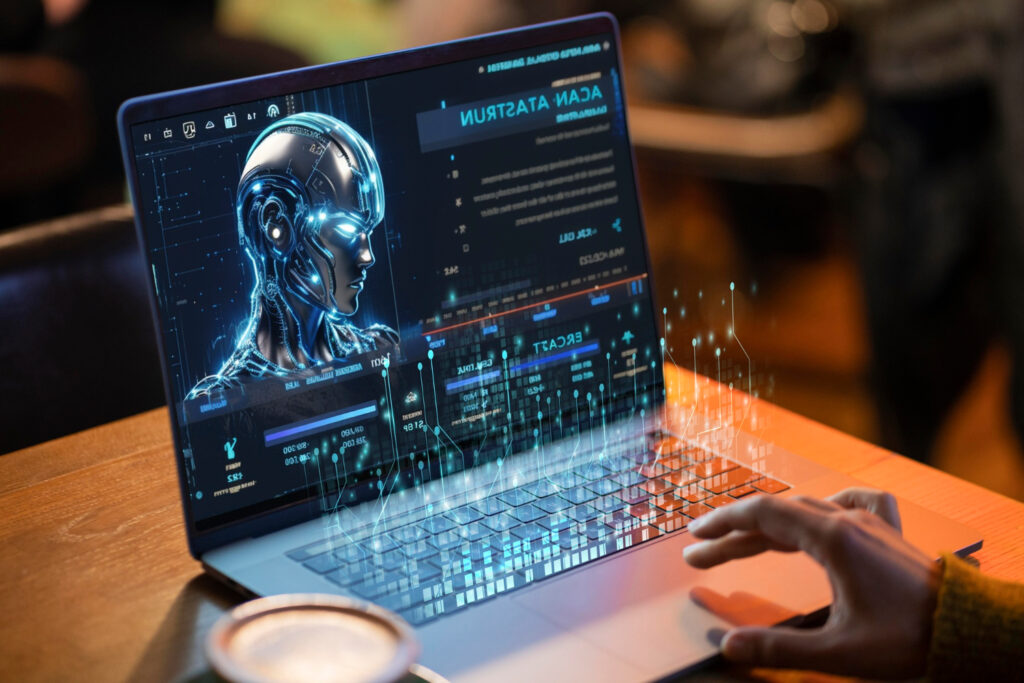Artificial intelligence (AI) is creating new opportunities for companies to innovate and grow but many organizations remain on the sidelines for now, some because they don’t know where to start to implement AI, according to SHI.
During the Jan. 25 webinar “Getting Started with AI: Strategies for Success in the Microsoft Ecoverse,” GHI explained how companies can learn how to identify and prioritize their AI use cases and goals, select the right Microsoft AI tools and platforms for their needs, measure and optimize their AI outcomes and impact, and avoid common mistakes and challenges when adopting AI.
This is the “era of enablement,” Michael Heath, corp. technical solutions engineer – Power Platform at SHI, said at the start of the webinar. “It is here. It’s been here for a little while,” he told viewers.
Now, he said, industries are shifting away from digital transformation to focus on enablement,” he said, explaining: “What I mean by enablement is we have collected all this data. We’ve digitized this data…. But now we need to unlock it, give it back to the people and have them delivering impact. That’s what it’s all about. So we’re enabling the whole workforce to really use this data and impact the organization.”
The big focus since last year, of course, has been on generative AI, he pointed out.

The Need For Data
Dominick Raimato, ASG solutions architect – M365 at SHI, said he has long been a “huge data nerd,” adding: “It’s really a great transition into the AI space because what do you need to train for AI models? Well, you need some really great data.”
Raimato described himself as a “professional troublemaker” who likes to try and “really disrupt industries, he said, noting: “AI is a great platform for disrupting industries and changing how we do business. Business as usual? Not anymore. It’s evolving rapidly.”
What is different now, he explained, is “I can now interact with an AI engine and be able to specify some parameters and say, ‘Hey, look, I’ve got these ingredients. I’m looking for an Italian style dish.’ And it comes back with a suggestion or a number of suggestions.”
The technology now “allows us to enable a little bit more creativity” and “allows us to think a little bit outside the box simply because we’re using another tool to help kind of expand that mindset that we have and really get more out of it. And it’s just so exciting to see how far it’s come,” Raimato added.
Microsoft Copilot’s Arrival
“As a part of generative AI, we [now] have this thing called Microsoft Copilot for Microsoft 365, Heath pointed out, referring to the introduction of Microsoft’s generative AI technology branding.
And the timing is perfect, he said, noting this is “just an exciting time to be using a tool like this.”
“I think one of the things that most companies don’t realize is the value within their own proprietary data,” according to Raimato. “The problem is accessing it. So there’s not necessarily a high price tag put on that. When you think about all the information that you have between presentations, databases, communications, documentation … all that information tends to get siloed sometimes, [making it] hard to find,” he noted.
But “what we’re now starting to see with Copilot for Microsoft 365 is that we can use that data to help train a much larger language model that allows us to get better integration and better answers based on the business context within our organization,” said Raimato.
He explained: “What I love about this whole process is that now, instead of having to go out and go hunt and find all these documents throughout the organization, I can now pull up Copilot inside of Word, Excel, Outlook, Teams, and be able to answer questions about my business data and get responses to it. And that, to me, is absolutely amazing. And Copilot is new. Everyone’s been asking about it. It was officially released on November 1, and you’re now starting to see a lot of people starting to ask questions and consider it.”
Challenges and Concerns
Among concerns that companies have are those related to regulations and compliance, but what is happening is that organizations are able to still use AI ,even if they’re highly regulated, according to SHI.
Another concern are the costs associated with implementing AI. But Raimato, saying he was quoting Heath, asked: “Why are we worried about the cost of the shovel when we’re digging for gold.
It also is going to take some time for a company to make the transition to AI, according to Heath, who conceded: “The journey doesn’t happen overnight.”
 Then there is the frequent concern that has been raised about AI: that it may cost many people their jobs.
Then there is the frequent concern that has been raised about AI: that it may cost many people their jobs.
“When you start talking about artificial intelligence, and you’re talking to a group that maybe is worried that their job might be replaced, that could be a real challenge from a people management perspective,” said Raimato.
But he said: “What I think is really key, when we start to think about the people aspect of these things, is that the goal here is to get out of the mundane and really get them focused on more higher level thinking and challenges. Imagine if you took something, a process that took you three days, we could automate that in a matter of minutes but then we could give three days for somebody to go through it and do deeper analysis and understand the results better.”
Heath went further, telling viewers: “This is really key: AI is not an island. There has to be a clear goal, a shared vision, and everybody needs to be a part of that. And the reason is because AI means different things to different people. So it’s important to include them in that vision, because that’s going to make AI stronger. You don’t see AI being used by one person in a room, right? It’s this shared effort around many of the things we’ve talked about.”
Pointing to a phrase Raimato said he heard a while ago, he said: “AI is not going to take your job but the person using AI will.”
Heath added that he didn’t think AI will replace people over time. “Humans are a part of the loop. And even, not to get too deep in the weeds…. We’re still humans. We still need to be a part of the process. We still need to be vetting out the responses that we’re getting to ensure validity.”

